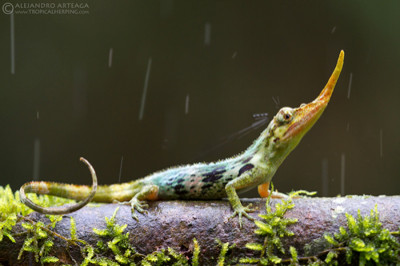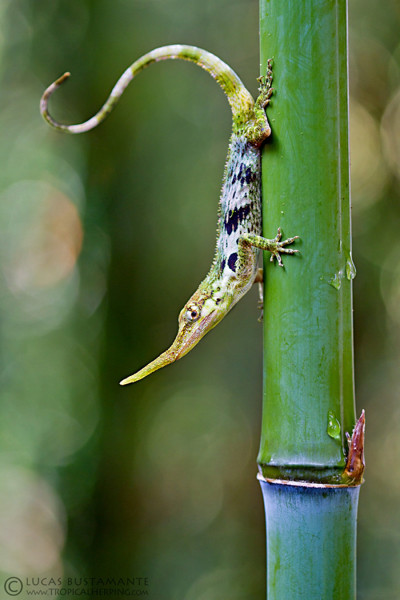Pinocchio Lizard Found In Ecuador, ‘Mysterious Creature’ Believed To Be Extinct For 50 Years [PHOTOS]

Truth be told, the Pinocchio lizard is alive and well.
Also known as the Pinocchio anole, the lizard known for its unusually long nose has been spotted in an Ecuador forest after it was believed to be extinct for 50 years, LiveScience reports.
“We wanted to find it because it is a fantastic and mysterious creature that has remained unknown for almost all human beings for decades,” Alejandro Arteaga, a co-founder of the educational and ecotourism company Tropical Herping, who helped search for the lizard, said in a statement.
The Pinocchio lizard, or Anolis proboscis, was seen by a team of biologists for the first time in 15 years. Named after the wooden puppet whose nose would grow with each lie he told, the Pinnochio lizard has a snout that resembles a rhinoceros'.


Its elongated nose is flexible and was seen “bending when in contact with leaves and other soft objects,” Jonathan Losos, a herpetologist from Harvard University, said, adding that “hydrostatic pressure might be used to change the horn’s shape."
First discovered in 1953, it was believed to be extinct until it was found in 2005 and again in 2010. The lizard’s “cryptic camouflage” makes it especially difficult to find. The latest sighting took place at night when the lizard’s coloring was paler and most of its predators are asleep so they are less likely to run away. The team kept the lizard overnight to snap a few shots before releasing it back into the wild.
"After looking for so long … It was very thrilling to find this strange lizard," Arteaga told LiveScience.
Considered an endangered species, the Anolis proboscis has experienced habitat loss from logging, human settlement, agriculture and grazing, according to the International Union for Conservation of Nature and Natural Resources.
The latest Pinnochio lizard was seen at nearly 5,000 feet in the cloud forest of Mindo -- a two-hour drive from the country’s capital of Quito.
“We discovered this lizard occurs in habitats very different to what has been suggested in the literature. No one had ever found the lizard in deep cloud forest away from open areas. The other sightings were in forest border,” Arteaga said. “Besides learning this we learned that a highly unlikely but not completely impossible event (like finding the rarest lizard in Ecuador), becomes likely if enough time passes.”
© Copyright IBTimes 2024. All rights reserved.






















